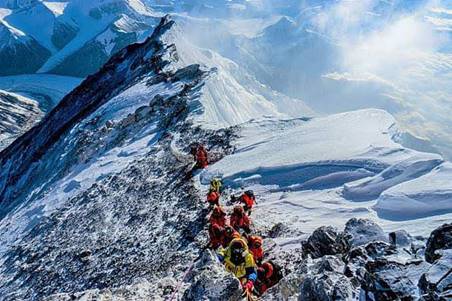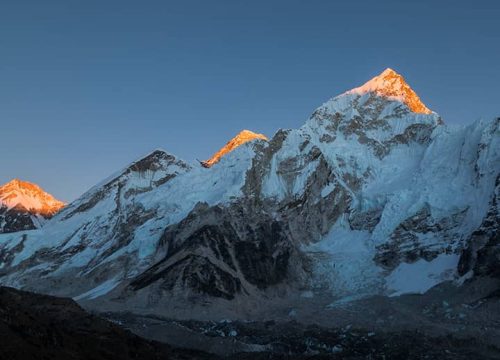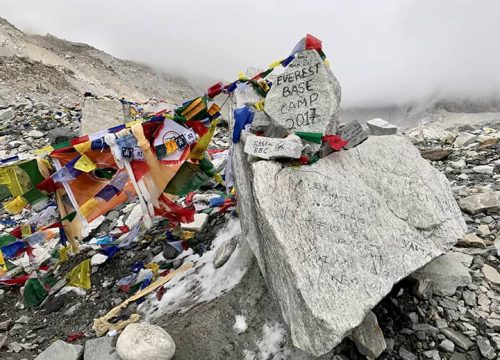Introduction to the Everest Region
The Everest Region in Nepal is a dream destination for mountaineers and adventure travelers. Known for its snow-clad mountains, rich local culture, and stunning Himalayan landscapes, it offers some of the most challenging and memorable trekking experiences in the world. For travelers seeking adventure, exploring the Everest Region climbing peaks is an experience that will stay with you forever. Learn more about trekking options on the Everest Base Camp Trek.
1. Mount Everest – The Ultimate Climb
Mount Everest, the highest peak on Earth at 8,848 meters, is the crown jewel of the Everest Region. While summiting Everest requires expert mountaineering skills, trekking to the base camp gives you breathtaking views of this iconic peak. For detailed Everest expedition tips, visit the Adventure in Nepal page.
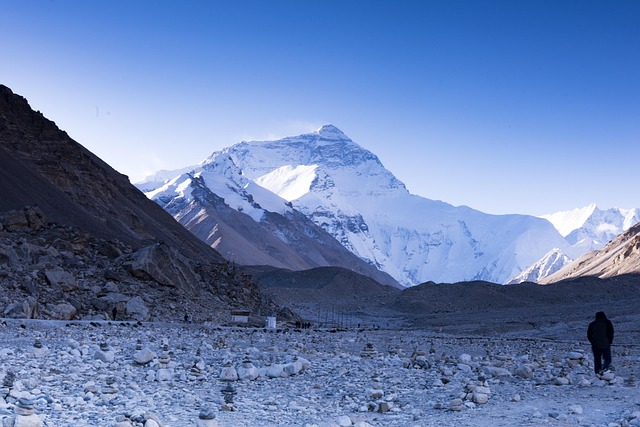
2. Lhotse – The Fourth Highest Peak in the World
Lhotse, standing at 8,516 meters, is known for its steep cliffs and challenging climbing routes. Trekkers often see Lhotse from the Everest Base Camp trail. The views of Lhotse combined with Everest provide a panorama that is truly unforgettable. For factual details about Lhotse, check Britannica – Mount Everest.
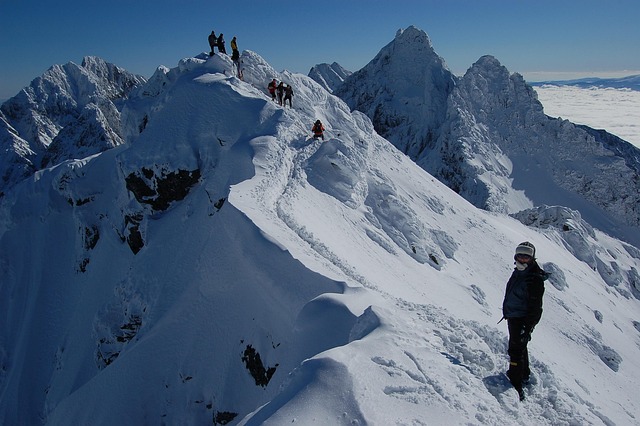
3. Ama Dablam – The Iconic Pyramid of the Himalayas
Ama Dablam, often called the “Matterhorn of the Himalayas,” is a striking peak at 6,812 meters. Its sharply pointed summit and hanging glaciers make it a favorite among photographers and climbers. Trekkers can admire Ama Dablam during the Everest Region trekking routes like Dingboche and Pangboche. To know more about trekking and adventure trips in Nepal, visit Adventure in Nepal.
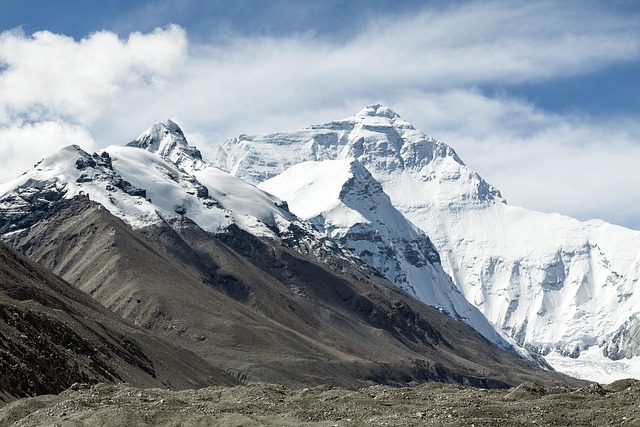
4. Cho Oyu – The Gentle Giant of the Everest Region
Cho Oyu is the sixth-highest mountain in the world at 8,188 meters. Compared to Everest and Lhotse, it is considered one of the easier 8,000-meter peaks to climb. Its proximity to the Tibetan border allows climbers to enjoy both Nepalese and Tibetan landscapes on their journey. For climbing guidance and logistics, check Nepal Tourism Board.
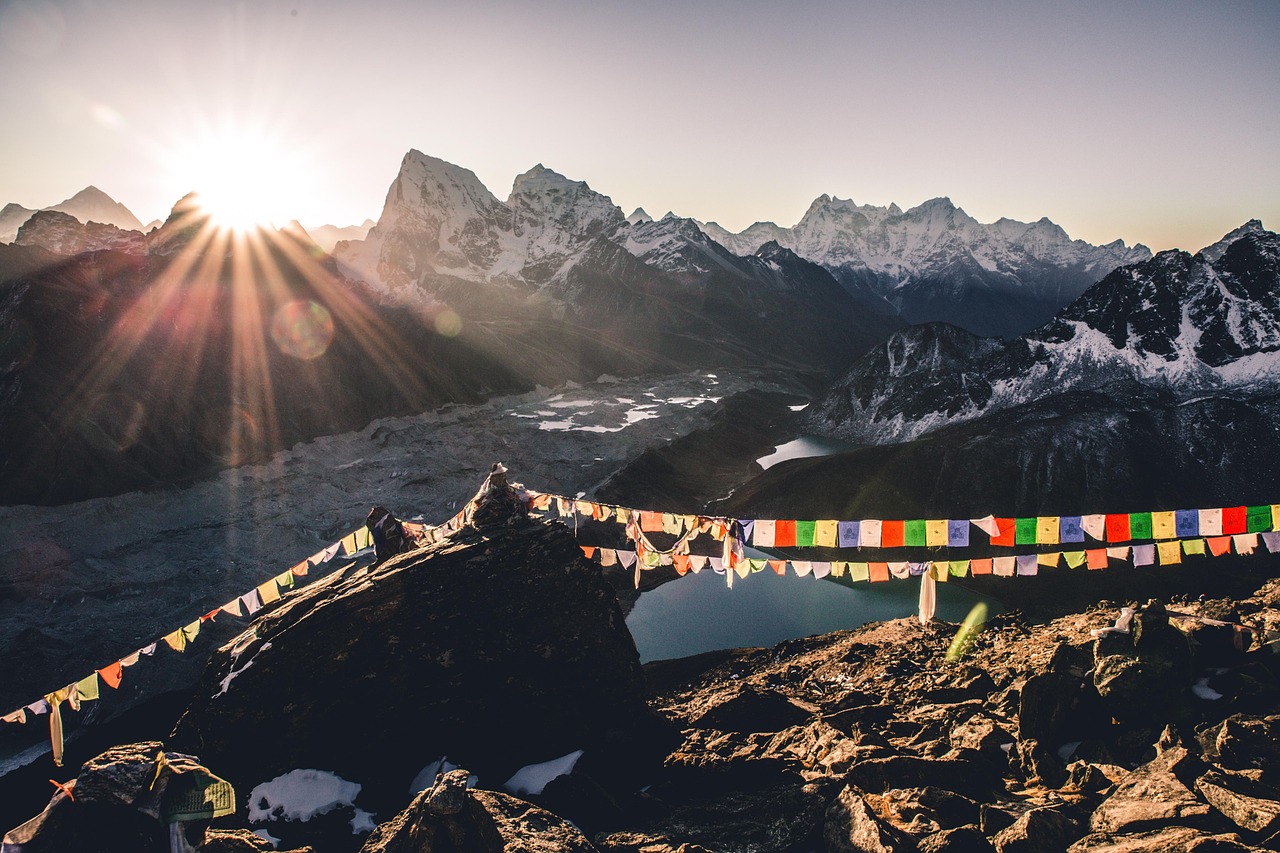
Tips for Climbing Peaks in the Everest Region
- Train ahead of time to build endurance for high-altitude trekking.
- Acclimatize properly to avoid altitude sickness.
- Hire experienced guides and porters for safety and support.
- Carry essential trekking gear, including warm clothing, proper boots, and trekking poles.
- Respect local culture and the natural environment.
For a complete guide on Everest Region trekking, visit Everest Base Camp Trek.
Contact us for more details.

